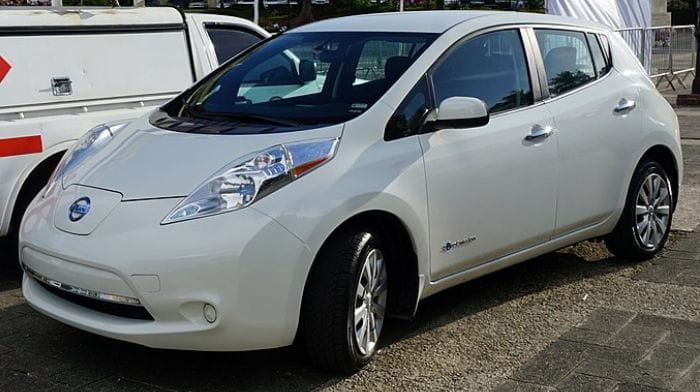
By Jonathan Lesser for RealClearEnergy
Just recently, the International Energy Agency released its annual report on electric vehicles, this time celebrating that nearly one in five cars sold in 2023 is projected to be an EV. But if electric vehicles are so wonderful, why are consumers and businesses being forced to buy them?
The clearest example of this came with the US Environmental Protection Agency’s (EPA) new emissions standards for vehicles, released earlier this month, which require manufacturers to increase overall fuel efficiency by over 25% by 2026, effectively mandating that EV’s make up two thirds of car sales. The EPA claims this will provide a total of over $1 trillion in benefits by 2055, reduce crude oil imports by 20 billion barrels, and reduce CO2 emissions by 10 billion tons.
RELATED: ‘Climate Envoy’ John Kerry’s Jet-Set Spending Is Getting Plenty of Cloud Cover
What’s not to like? Just about everything.
Let’s start with the economic impacts, which will be ruinous. First, the price of EVs will increase; that’s basic economics. The new rules will require that about two-thirds of the vehicles manufacturers sell are EVs. Given that most consumers do not purchase EVs, the best way to do that is to raise prices on internal combustion (ICE) vehicles until they are more costly than EVs. (Today, the reverse is true, with the average EV costing around $65,000, while the average ICE vehicle costs around $48,000.) Increasing provides an umbrella under which EV prices can be raised, too. So, if a consumer or business wants to purchase a new vehicle, they effectively will be forced to buy a more costly EV.
Second, increasing the demand for EVs will increase the demand for the materials to manufacture batteries, which are the single largest cost of an EV. Prices for rare earths, for example, have increased between 60% and 400% since 2020. Prices for lithium, the basic ingredient in most EV batteries, have increased by about 400%. Moreover, the US continues to prevent development of new mines to supply those materials. Instead, China has a stranglehold on them, and lax environmental rules to boot.
Then there is the electricity needed to charge those EVs, along with the charging stations in homes, apartment buildings, and on highways. Claims that this electricity will actually reduce emissions are based on huge predicted increases in wind and solar energy development. Yet, the US Energy Information Administration projects that, by 2050, wind and solar will provide only about 40% of electricity supplies. Consequently, much of the electricity needed to charge those millions of EVs will be provided by natural gas and even coal. So, while the EPA may limit tailpipe emissions, it will transfer many of those emissions to power plants.
RELATED: AOC, Democrats Reintroduce ‘Green New Deal’
Electricity costs will also increase, negating the anticipated savings from “refuelling” those EVs. That’s why the federal government has provided subsidies for wind and solar energy development for 45 years and why so many states implemented green energy mandates: developers of wind and solar could not, and still cannot, compete on price alone, despite proponents’ claims.
This is already the case in Europe, where efforts to increase reliance on wind and solar generation with lavish subsidies have led to punishing increases in electricity costs. Germany, for example, has the highest electricity rates in Europe, with the continent experiencing deindustrialization become industries cannot afford energy.
A wind- and solar-based electric grid will require colossal amounts of battery storage, equivalents to several centuries’ of output from Tesla’s “gigafactories.” It’s not uncommon already for EV charging companies to charge more for electricity than the equivalent cost in gasoline.
But let’s suppose those hurdles magically are overcome. The environmental justification for the EPA rule is nonetheless absurd. The claimed reductions in CO2 emissions will have no measurable impact on world climate. Reducing CO2 emissions by 10 billion tons between 2027 and 2055 sounds like a lot. But world CO2 emissions were 34 billion metric tons in 2021 alone. So, over 28 years, the EPA’s proposed rule will reduce CO2 emissions by the equivalent of about four months of world CO2 emissions. And world emissions continue to increase because developing nations, especially China and India, have no intentions to restrict their economies.
RELATED: Biden Claims ‘Climate Change’ Bigger Threat Than Nukes as He Pushes Ever Closer to WWIII
The basic economic impacts, along with the negligible climate benefits, raise a simple question: why is the Biden Administration pursuing this EV windmill-tilting exercise? By effectively forcing consumers and businesses to purchase vehicles they do not want, the Administration will impose yet more damage on American’s standard of living, reducing mobility and raise costs.
That can’t possibly be their goal, right?
Jonathan Lesser is the president of Continental Economics and an adjunct fellow with the Manhattan Institute.
Syndicated with permission from RealClearWire.
